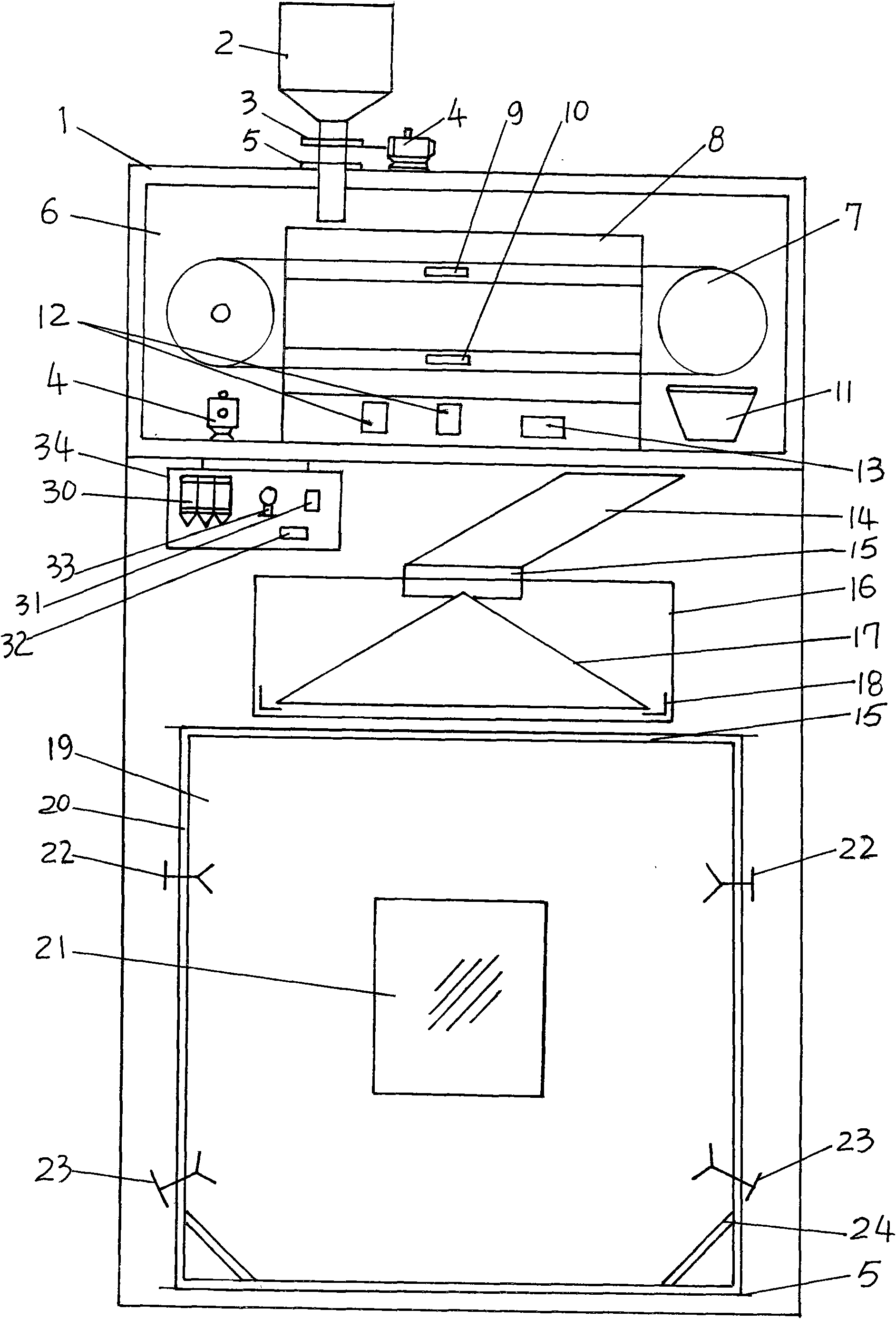The disadvantages of this invention are: 1. What the rice strengthens is
trace mineral nutrients, and the compound or mixing unit is very small, and the
dissolution and mixing methods of
calcium lactate and the like are not explained in detail.
By comparison, it can be seen that the content of
calcium,
selenium and iron in the mixed mineral nutrients of the invention product does not meet the national standards.
3. The process of washing rice will cause the loss of enhanced nutrients
[0004]
Chinese Patent Publication No. CN2413514Y, on January 10, 2001, disclosed the invention of "Enhanced Rice with Systemic
Nutrition", which is characterized in that the rice includes puffed micropores on the rice, and the dissolved and / or insoluble ingredients contained in the puffed micropores The superfine
powder nutritional agent is realized by expanding the rice particles quantitatively to form expanded micropores, soaking the
nutrient solution into the micropores and
drying them, and then using
pectin to penetrate into the surface of the rice to form a protective film. Spray glue paste and / or
pectin etc. to form the outer protective film layer. Its disadvantages are: 1. The variety and content standard of the
nutrient solution are not disclosed, so it is difficult to determine the
nutritional quality of the product
After cooking, the puffed micropores will increase and expand, the rate of whole rice is low, and the rate of
broken rice is high, which is difficult for consumers to accept
3. Although the outer layer of rice has a protective film, the process of washing rice will still cause the loss of added nutrients
The weak point that two formulas exist is: 1,
vitamin B 2 The properties are orange-yellow, slightly smelly, slightly bitter, and the smell is very strong, which affects the sensory and taste of rice products
2. The mineral nutrient formula lacks the
selenium element that most of the
human body lacks and needs to be supplemented
3. The specific varieties of mineral elements are not specified in accordance with the requirements of relevant laws and regulations, because some varieties are prohibited from being added to rice or cereal products
The weak point that this method exists is: 1, secondary spraying dips in the
nutrient solution process, does not provide the implementation mode of controlling rice fortified
nutrient content, thus, is difficult to guarantee the stability of each
monomer nutrient content index in rice
2. No washing process and
sanitation requirements for rice are given, and the process of washing rice before cooking will inevitably result in the loss of added nutrients
3. The rice after spraying is dried naturally for 1 hour, which has low production efficiency and high cost, which is not conducive to industrial production
4. When the rice in the process is sprayed with nutrient solution in the spray cabin, it is difficult to achieve the effect of slow
dryingThe disadvantages of this method are: 1. Quantitatively putting rice and nutrient solution into one or more mixing devices is not suitable for industrial production. Manual quantification may lead to unstable addition of nutrient solution and affect the stability of
nutrient content indicators.
2. The stirring (gelatinization) process at 50°C for 5 to 10 minutes changes the natural structure and taste of rice, which is difficult for consumers to accept
3. There is no rice washing-free process and
hygiene requirements, and the rice washing process will inevitably result in the loss of added nutrients
The
disadvantage of the spraying device for rice nutritional enhancement described in this method is that a spraying device can realize the three functional requirements of nutrient solution spraying, slow
drying, and soaking solution for rice under the conditions of the
work flow, and the result may not be good. ; Because the water-containing nutrient solution produces water droplet atomization and sprays rice through
gas pressure, the spraying device is rotating non-stop, and the
moisture content of rice increases and sticks to each other after being sprayed by liquid mist non-stop in this device, thus, it is difficult
Process requirements for slow drying and soaking solution
The atomizing
film applicator of the device is mainly composed of a circular box, two inlet and outlet flanges, a
rectifier, a decimeter, three fan nozzles, a 360° conical
nozzle and a receiving hopper. Disadvantages: 1. The rice falls directly from the feed port to the upper end of the cone-shaped
metal decimeter, which is easy to cause the whole rice to be broken and increase the
broken rice rate.
2. It is difficult for a
metal cone decimeter to disperse the rice hanging down in the bin body evenly. The distance from the atomized coating film to the
discharge port is short, and the rice scattered by the decimeter immediately passes through the atomized coating film and Falling into the
discharge port, it is difficult for the grains of rice to receive a uniform atomized coating, which can lead to unstable nutrient content indicators in the product
3. The upper feed port and the lower
discharge port of the atomized coating film can easily cause 30% to 60% loss of nutrient liquid mist and gas, and it is difficult to ensure the uniformity of the rice nutrient film
 Login to View More
Login to View More  Login to View More
Login to View More 


